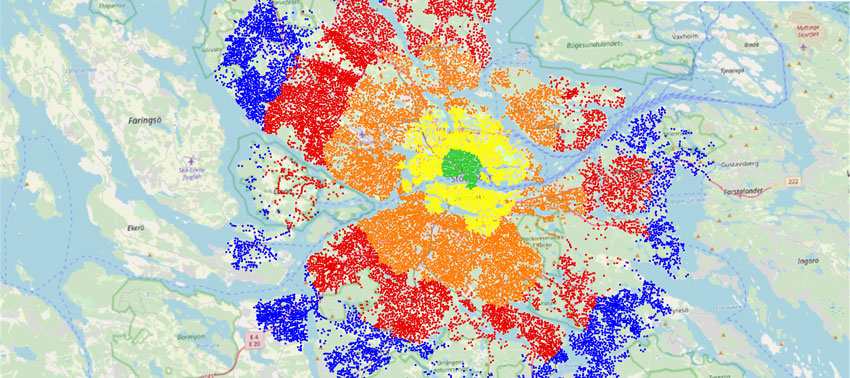New crowdsourcing method to collect cycling data
Crowdsourcing is a new and efficient method to collect cycling data. To get increased levels of cycling in Sweden and other countries, many measures are needed in planning and maintaining the infrastructure, as well as communication and behaviour. Reliable cycling data is needed to prioritise the right measures.

The Swedish Transport Administration tested crowdsourcing as a new way to collect data about cycling traffic, through a study done by Trivector. The method was tested in Gothenburg in the autumn of 2017 – cycling data was collected through apps in cyclists’ phones. 861 volunteers took part, together doing over 21 000 cycling trips. The project generated a large amount of useful data.
Respondents similar to traditional travel study
In parallel to crowdsourcing, a traditional travel survey was done using a paper-based questionnaire, which asked people how they travelled. The respondents from the two types of surveys were surprisingly similar in terms of sex, age and where they lived. However, there were slightly fewer older cyclists and cyclists younger than 20 in the crowdsourced survey. Three apps were used to collect travel data: TravelVu, Strava and Moves. Most of the participants used Travelvu, while only a few used Moves.
– There were large differences between the users of Strava and TravelVU. Strava users were to a higher degree men and middle-aged, and they did longer and faster trips by bike. It is therefore unsuitable to just use data from Strava and expect them to be representative of cyclists in general, according to Dr Erik Stigell, researcher at Trivector Traffic.
The good results for both the recruitment method and the collected cycling trips show that the method has potential to work as an alternative to traditional travel surveys, or as a complement.
Cycling data useful for many purposes
The cycling data collected through crowdsourcing can be used in different ways:
- To give increased knowledge on cyclists’ route choice, giving important information to support maintenance of and new investments in cycling infrastructure.
- To get information om cyclists’ exposure to dangerous traffic environments and street space with high levels of noise and air pollution.
- Before-and-after studies to evaluate impacts of infrastructure investments or campaigns.
- Analysis of cyclists’ speed as a way to identify problems with low-quality infrastructure in the cycling network.
More information
For more information, contact
Dr Erik Stigell, Trivector Traffic, research leader, +46 10-456 56 79
Astrid Michielsen, Trivector Traffic, +46 10-456 56 75
Learn more about the app TRavelVU.

